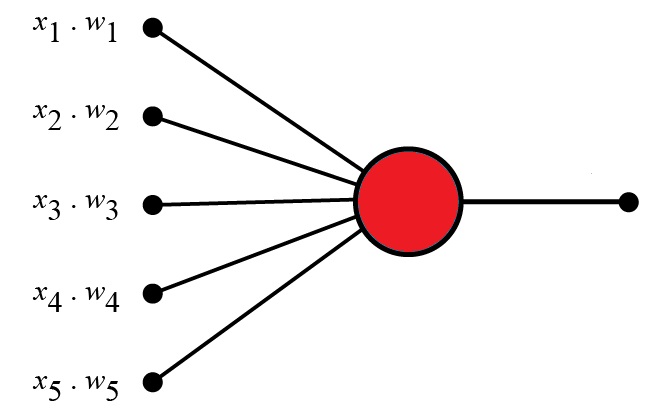Perceptron

The first part of the perceptron is the input. The input
can be represented as a series of nodes,
originally binary inputs ($x_i$) all with their own
individual weight ($w_i$). We will then get the
sum of all the inputs and weights multiplied,
represented by the following equation:
$$
\sum^n_{i=0}{x_i \cdot w_i}
$$
Now we must determine our threshold value. The
threshold will be compared to the results of the
previous equation to determine whether the final output
will be 1 or 0. This value will be adjusted throughout
the training process to determine the best results, but
if you are looking for something in the middle, you take
the sum of the weights and divide by 2.
$$
\frac{\sum^n_{i=0}{w_i}}{2}
$$
Now using our threshold, we can determine the
Activation Function. The activation function
determines whether the the final output of the
perceptron, originally a 1 or a 0. It is simply
represented as $sum > threshold$.